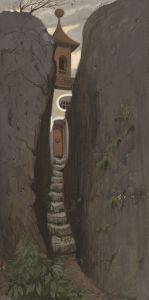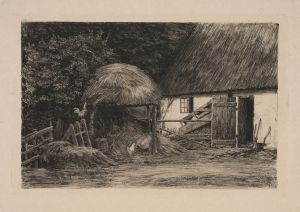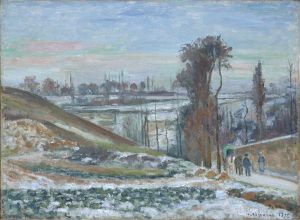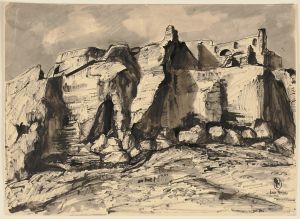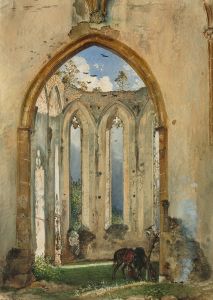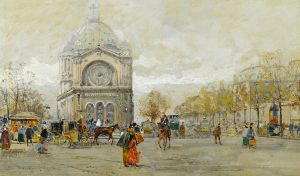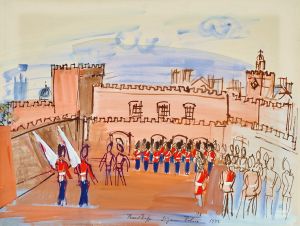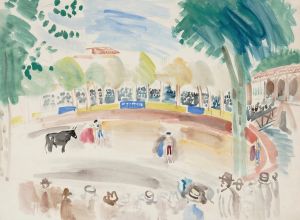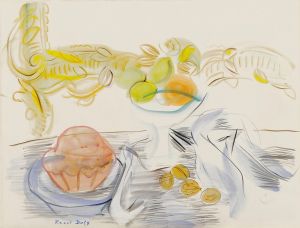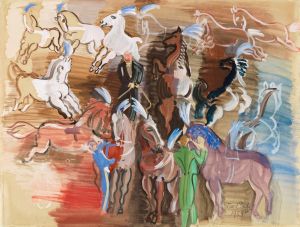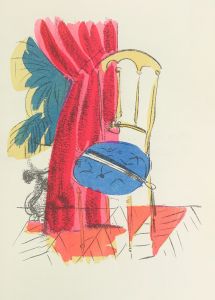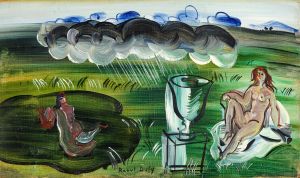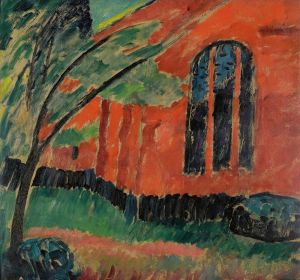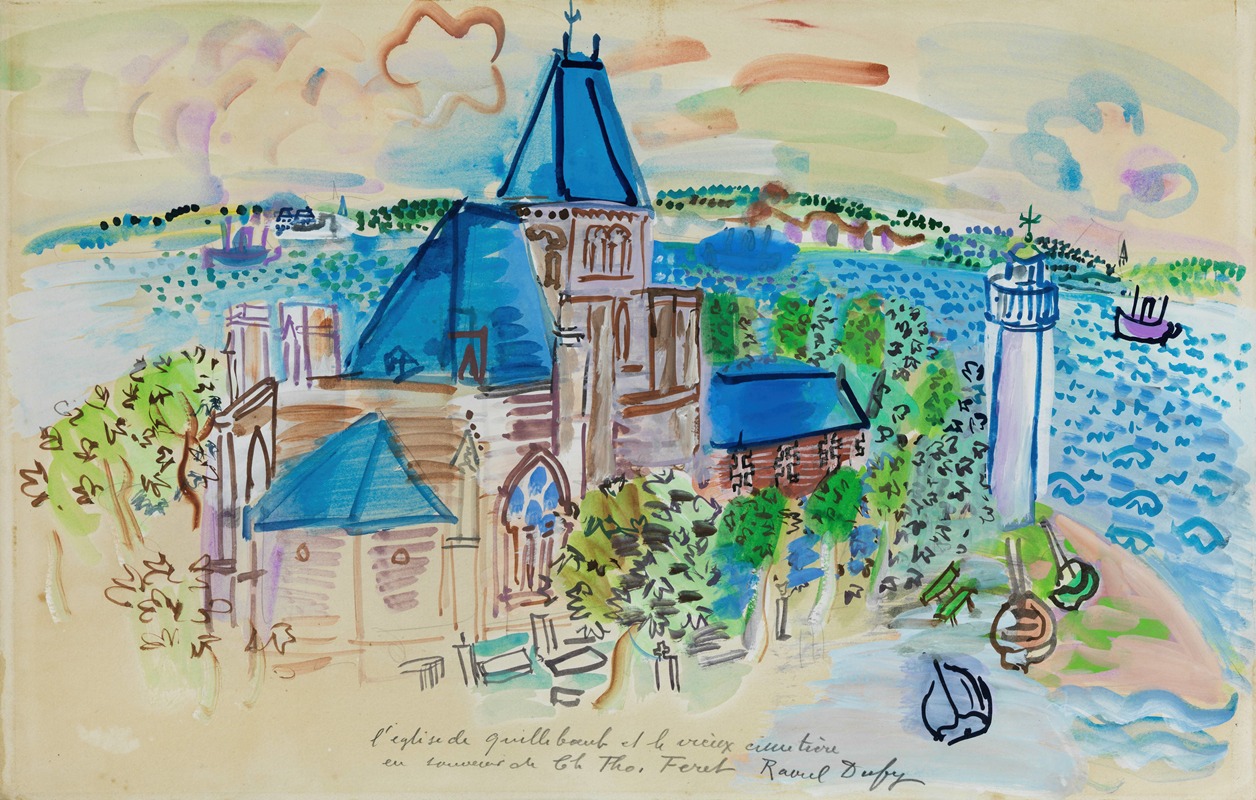
L’Église de Quillebeuf
A hand-painted replica of Raoul Dufy’s masterpiece L’Église de Quillebeuf, meticulously crafted by professional artists to capture the true essence of the original. Each piece is created with museum-quality canvas and rare mineral pigments, carefully painted by experienced artists with delicate brushstrokes and rich, layered colors to perfectly recreate the texture of the original artwork. Unlike machine-printed reproductions, this hand-painted version brings the painting to life, infused with the artist’s emotions and skill in every stroke. Whether for personal collection or home decoration, it instantly elevates the artistic atmosphere of any space.
Raoul Dufy, a prominent French Fauvist painter, is renowned for his vibrant use of color and fluid brushwork. One of his notable works is "L’Église de Quillebeuf," which captures the essence of the small town of Quillebeuf-sur-Seine in Normandy, France. This painting exemplifies Dufy's unique style and his ability to infuse everyday scenes with a sense of liveliness and charm.
Raoul Dufy was born on June 3, 1877, in Le Havre, France. He studied at the École des Beaux-Arts in Paris, where he was influenced by the Impressionists and later by the Fauvist movement, which emphasized bold colors and expressive forms. Dufy became known for his depictions of leisure activities, landscapes, and urban scenes, often characterized by a sense of joy and spontaneity.
"L’Église de Quillebeuf" is a testament to Dufy's fascination with capturing the spirit of a place through his art. The painting portrays the church of Quillebeuf, a small town located along the Seine River. This region was a frequent subject for Dufy, who was drawn to its picturesque landscapes and the interplay of light and color. The church itself is depicted with Dufy's signature style, using vibrant colors and loose brushstrokes that convey a sense of movement and vitality.
Dufy's approach to painting was heavily influenced by his interest in capturing the fleeting effects of light and atmosphere. In "L’Église de Quillebeuf," he employs a palette of bright, contrasting colors that bring the scene to life. The church is set against a backdrop of lush greenery and a vivid sky, creating a harmonious composition that reflects Dufy's mastery of color and form. His use of bold outlines and simplified shapes adds a sense of rhythm and dynamism to the painting, inviting viewers to experience the scene with fresh eyes.
Throughout his career, Dufy was known for his ability to transform ordinary subjects into extraordinary visual experiences. His work often evokes a sense of joy and optimism, qualities that are evident in "L’Église de Quillebeuf." The painting captures not only the physical structure of the church but also the atmosphere of the surrounding environment, inviting viewers to appreciate the beauty of the everyday world.
Dufy's contributions to the art world extend beyond his paintings. He was also an accomplished textile designer and illustrator, and his work in these fields further demonstrated his innovative use of color and pattern. His artistic legacy continues to influence contemporary artists, and his works are celebrated for their ability to convey emotion and energy through color and form.
"L’Église de Quillebeuf" remains a significant example of Dufy's artistic vision and his ability to capture the essence of a place. Through his use of vibrant colors and expressive brushwork, Dufy invites viewers to see the world through his eyes, finding beauty and inspiration in the everyday. This painting, like many of Dufy's works, serves as a reminder of the power of art to transform our perception of the world around us.





